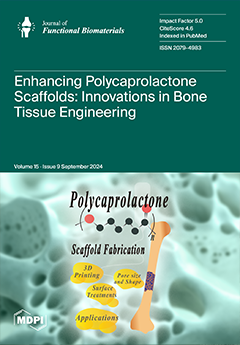Aim: With modern dentistry advancements, children and parents have significantly raised aesthetic expectations in pediatric dentistry. Pediatric zirconia crowns (PZCs) provide a superior aesthetic appearance compared with stainless steel crowns (SSCs), making them a popular treatment option. However, a comparison of the compressive stresses caused by these crowns on the roots of primary teeth and alveolar bones has not been conducted.
Materials and Methods: Cone beam computed tomography (CBCT) images of an eight-year-old female patient who experienced premature loss of a primary mandibular left second molar were obtained from a dental hospital database. Rhinoceros 4.0 software was used to process and simulate images. Under simulated chewing forces, stress on the PZC, SSC, and intact primary first molars as control groups, as well as their roots and alveolar bone structures, was assessed with finite element analysis.
Statistical Analyses: Depending on whether the descriptive data were normally distributed, the Student t-test and Mann–Whitney U test were used. Quantitative variables differ between the two categories of qualitative variables. One-way ANOVA and Kruskal–Wallis H tests were used depending on standard distribution assumptions.
p < 0.05 indicates statistical significance differences.
Results: PZCs, SSCs, and cement layers were stressed according to von Mises values, while roots and alveolar bones were stressed according to maximum and minimum stress values. When assessing crowns, SSCs exhibited the highest von Mises stress values, followed by PZCs and control groups (
p < 0.001). In the cement layer, SSCs obtained significantly higher values (
p = 0.003). In the root area, minimum principal stress values are more critical. The highest values were obtained from the intact tooth, PZC, and SSC, respectively (
p < 0.001). Alveolar bones did not differ significantly in minimum principal stress (
p = 0.950).
Conclusions: Restorative full-coverage crowns exhibited higher von Mises values than intact teeth, as per current research findings. The von Mises values were highest in SSC, while lowest in PZC. As a result of this condition, the cement layer and root areas had higher von Mises stress and compressive stress. Alveolar bones were not affected regardless of restoration type. PZC transmits higher stress due to its properties.
Full article






